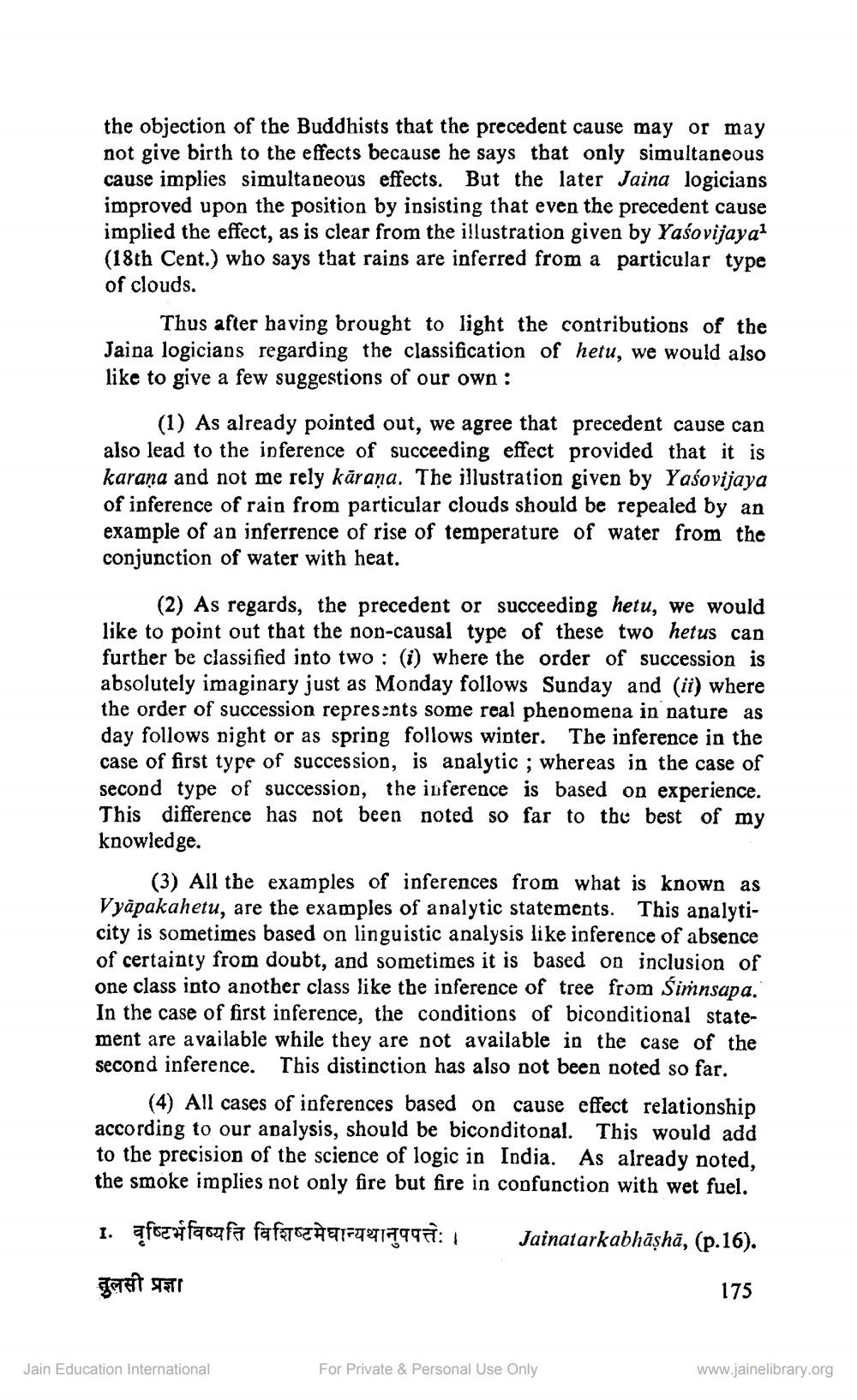________________
the objection of the Buddhists that the precedent cause may or may not give birth to the effects because he says that only simultaneous cause implies simultaneous effects. But the later Jaina logicians improved upon the position by insisting that even the precedent cause implied the effect, as is clear from the illustration given by Yaśovijaya? (18th Cent.) who says that rains are inferred from a particular type of clouds.
Thus after having brought to light the contributions of the Jaina logicians regarding the classification of hetu, we would also like to give a few suggestions of our own :
(1) As already pointed out, we agree that precedent cause can also lead to the inference of succeeding effect provided that it is karana and not me rely kāraņa. The illustration given by Yasovijaya of inference of rain from particular clouds should be repealed by an example of an inferrence of rise of temperature of water from the conjunction of water with heat.
(2) As regards, the precedent or succeeding hetu, we would like to point out that the non-causal type of these two hetus can further be classified into two : (i) where the order of succession is absolutely imaginary just as Monday follows Sunday and (ii) where the order of succession represents some real phenomena in nature as day follows night or as spring follows winter. The inference in the case of first type of succession, is analytic ; whereas in the case of second type of succession, the inference is based on experience. This difference has not been noted so far to the best of knowledge.
(3) All the examples of inferences from what is known as Vyapakahetu, are the examples of analytic statements. This analyticity is sometimes based on linguistic analysis like inference of absence of certainty from doubt, and sometimes it is based on inclusion of one class into another class like the inference of tree from Simnsapa. In the case of first inference, the conditions of biconditional statement are available while they are not available in the case of the second inference. This distinction has also not been noted so far.
(4) All cases of inferences based on cause effect relationship according to our apalysis, should be biconditonal. This would add to the precision of the science of logic in India. As already noted, the smoke implies not only fire but fire in confunction with wet fuel.
1. aforkfaoufa fafarzÀT1747217997:
Jainatarkabhāşhā, (p.16).
तुलसी प्रज्ञा
175
Jain Education International
For Private & Personal Use Only
www.jainelibrary.org




